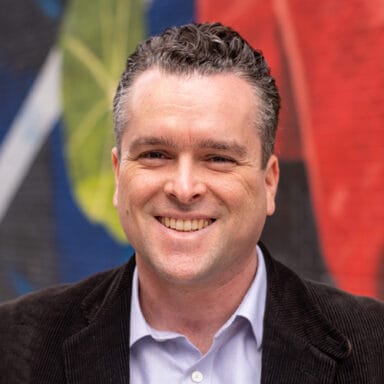Welcome to Locally Sourced, a biweekly Covering Climate Now newsletter for journalists working to localize the climate story. Share this newsletter with colleagues and journalism students interested in localizing the climate story. Vea la versión en español de “Fuentes Locales.”
Story Spark: Emergency Alert Systems
Effective emergency alert systems are becoming increasingly vital as climate change fuels more frequent, destructive, and unpredictable extreme weather events. Early warning systems not only save lives, but can also limit the devastation these disasters bring. Just 24 hours of preparation offered by an early warning can reduce the damage caused by an extreme weather event by 30%.
Sending out a warning isn’t enough though. In order to be effective, people need to be able to understand the alert and have the resources and time to act promptly. Confusing messaging, as seen during the Maui fires in 2023, can lead to tragic consequences. And quickly evolving events, such as the Los Angeles wildfires, illustrate how current warning systems struggle to keep up with the speed and ferocity of climate-fueled disasters.
Adequate early warning systems are still not widely available, especially where they’re needed most. According to the UN, nearly one out of three people, primarily in developing countries and on small islands, lack access to adequate emergency alerts. Global initiatives aim to close this gap by assisting countries in building and operating these systems to better protect against growing climate threats.
Stories We Like
- In Dominica, a small Caribbean island devastated by Hurricane Maria in 2017, Vox highlights how early warning systems are an essential climate change adaptation.
- As climate change drives more intense and frequent wildfires, a free community-driven app has become a vital tool for millions to receive emergency alerts, the Guardian reports.
- In Valencia, Spain, deadly floods fueled by climate change exposed the country’s unreadiness as emergency alerts weren’t sent out until nearly 8 hours after the flooding began.
- In the wake of the deadliest wildfire in modern US history, the Guardian details the communication breakdowns that made the Lahaina, Hawai‘i, fire so dangerous.
- The Atlantic explores best practices for push alerts and the threat of “alert fatigue” as climate disasters become more common.
- In North Carolina, CBS News explains the failure of some emergency systems during Hurricane Helene, which was found to be made worse due to climate change.
- The New York Times reports on the development of a different type of early warning system — one that would alert climate scientists to geoengineering.
- Emergency alerts that ignore language and literacy barriers hinder evacuation efforts in communities affected by extreme weather events, as highlighted in this NPR article.
Expert Tips

Jeffrey Schlegelmilch, the director of the National Center for Disaster Preparedness at the Columbia Climate School, offers tips for understanding and reporting on emergency alerts systems.
Learn what it takes for an emergency alert system to be effective: 1) The alert needs to go out. 2) People need to receive it. 3) People need to understand it and what to do about it. 4) People need to take protective action based on it. 5) Some people will need help, or otherwise be unable to take action on their own; there has to be a plan for this.
Understand that making an alert is not an easy decision: When is there enough information to sound the alarm? Often, alerts are sent when information is still uncertain because, by the time things are certain, it’s often too late to act. People can lose trust in alerts if the hazard abates or die during evacuations; often, alerts can be traumatizing in the long and short term (taking tolls physically, mentally, financially, etc.). All of this has to be considered before an alert goes out.
Dig deeper: Talk to the agencies involved in pushing out the alerts, but also talk to the civilians who need to act. Would the alert have actually helped? Would they know what to do? What investments beyond the alert system itself have been made to ensure the message leads to actions that save lives.
Helpful Links
Resources
- Understand the different emergency alerts used in the US and how they are distributed on the Ready.gov site.
- Find a comprehensive explanation of Wireless Emergency Alerts (WEA) on the National Weather Service’s website.
- Explore the UN’s plan to ensure that everyone in the world is protected by a disaster early warning system by 2027.
Recommended Experts
Laura Brewington, research professor, Arizona State University
Thomas Cova, professor of geography, University of Utah
Jeannette Sutton, associate professor and director, Emergency and Risk Communication Message Testing Lab
Before We Go…
The next Locally Sourced will highlight cold snaps. Have you reported about climate change’s potential link to extreme cold or explained the “polar vortex?” Send them to us at local[at]coveringclimatenow[dot]org. We’d love to consider them for the next edition of Locally Sourced and our media trainings and social platforms.
The Climate Station is a free-of-cost training program from CCNow that equips local TV station newsrooms in the US, including journalists, producers, and meteorologists, to cover climate news more effectively. For inquiries, please email Elena González at elena[at]coveringclimatenow[dot]org. Or apply here.
Want more story ideas? Check out the Locally Sourced archive for more topics to explore, including wildfires, home insurance, attribution science, and more.
Know someone who might be interested in this newsletter? Forward Locally Sourced to a colleague!
